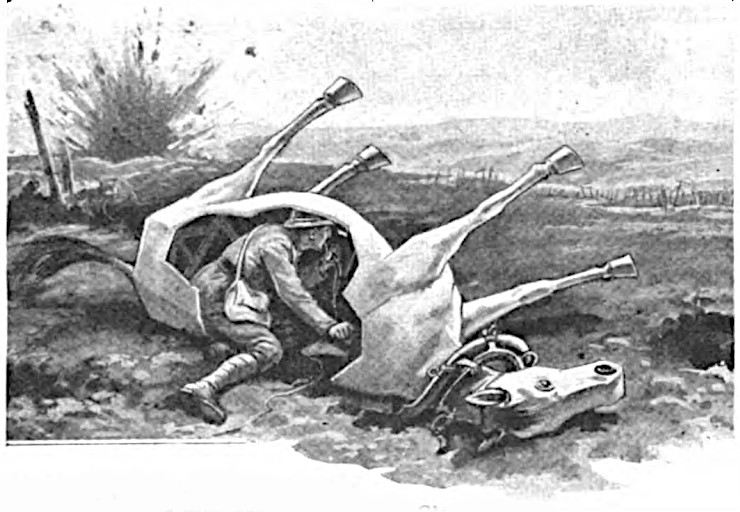
History’s ancient example of camouflage, the Trojan Horse, has a modern variation of peculiar interest. During the fighting near Craonne on the western front, some time ago, a horse broke his traces and dashed across ‘No Man’s Land’ toward the German defenses. When near the edge of a first-line trench he fell. The French immediately made the best of the opportunity and set camouflage artists at work fashioning a papier-mâché replica of the dead animal. Under cover of darkness the carcass was replaced with the dummy. For three days observers stationed in the latter were able to watch the enemy’s movements at close range and telephone their information to headquarters. Finally, when one observer was relieving another, the Germans discovered they had been tricked, and destroyed the post.
— “Observer Hides in Dummy Horse Near Enemy Trench,” Popular Mechanics 29:1 (January 1918), 72.
On another occasion, a standing tree, whose branches had all been shot away, was carefully photographed and an exact copy of it made, but with a space inside in which an observer could be concealed. One night, while the noise of the workmen was drowned by heavy cannonading, this tree was replaced by its facsimile. And there it remained for many a day before the enemy discovered that it was a fake tree-trunk. It provided a tall observation-post from which an observer could direct the fire of his own artillery.
— A. Russell Bond, “Warriors of the Paint-Brush,” St. Nicholas 46:6 (April 1919), 499-505.
